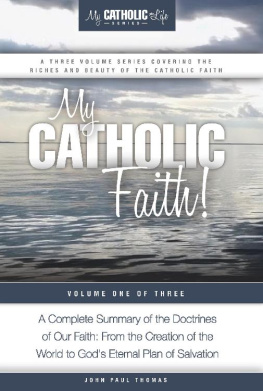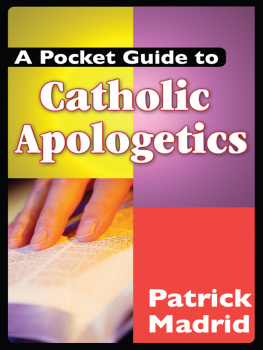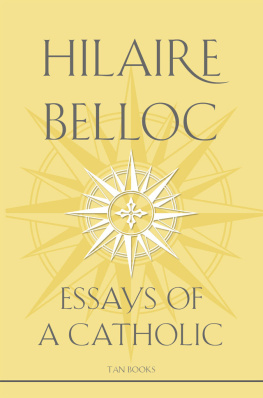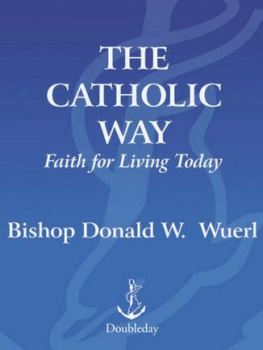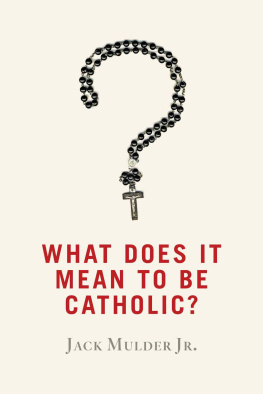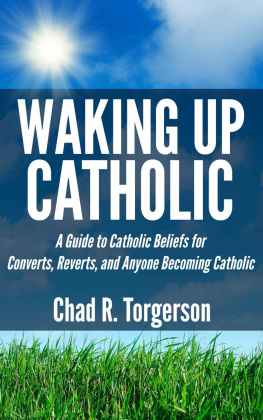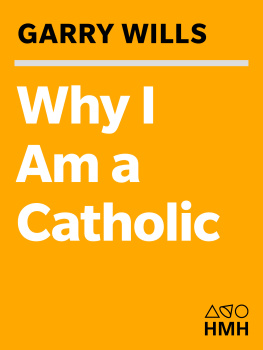Over 600 Definitions
for Catholic Kids
and Their Parents and Teachers
Written by Janet L. Alampi
Nihil Obstat:
Reverend Thomas W. Buckley, S.T.D., S.S.L.
Imprimatur:
Sen Cardinal OMalley, O.F.M. Cap.
Archbishop of Boston
August 10, 2007
Library of Congress Cataloging-in-Publication Data
Alampi, Janet L.
Look it up! : over 600 definitions for Catholic kids and their parents and teachers / written by Janet L.
Alampi.
p. cm.
ISBN 0-8198-4523-X (pbk.)
1. Catholic Church--Dictionaries, Juvenile. I. Title.
BX841.A53 2007
282.03--dc22
2007031594
Picture Acknowledgements: Ambiente Socio-Culturale: Dead Sea scrolls, . Ann Richard Heady, FSP: crosier, . Antonio Achilli: Joseph, . Arturo Mari: zucchetto, . Carmita Rodriguez: altar server, . Cimabue-Basilica Inferiore de S. Francesco Assisi: Franciscans, . Conxolus-Subiaco: Benedictines, . Daughters of St. Paul: tabernacle, . G. Pirrone: evangelists (Matthew, Mark, Luke, John), . Giovanni Donato da Montorfano: (St. Catherine of Siena) doctor of the Church, . Hans Memling / La Resurrection du Christ: resurrection, . H.D.E.: ambo, . Cover and inside design by Mary Joseph Peterson, FSP | Hoffmann: halo, . International News Photo: visitation, . Used by permission from INP. All rights reserved. Josephite Fathers: miter, . Linda Maria: dalmatic, . Mary Emmanuel Alves, FSP: sanctuary lamp, . Mary Joseph Peterson, FSP: chalice, . Rebecca Horton, OP: Dominicans, . Saints, Signs, and Symbols by W. Ellwood Post; Morehouse-Barlow Co.,Wilton, CT: Lamb of God, . Sebastiano del Piombo: memorare, . Society of St. Paul: (Icona di Marek Grzegorek, Czestochowa) icon, . |
The Scripture quotations contained herein are from the New Revised Standard Version Bible: Catholic Edition, copyright 1989, 1993, Division of Christian Education of the National Council of the Churches of Christ in the United States of America. Used by permission. All rights reserved.
All rights reserved. No part of this book may be reproduced or transmitted in any form or by any means, electronic or mechanical, including photocopying, recording, or by any information storage and retrieval system without permission in writing from the publisher.
P and PAULINE are registered trademarks of the Daughters of St. Paul.
Copyright 2008, Janet Alampi
Published by Pauline Books & Media, 50 Saint Pauls Avenue, Boston, MA 02130-3491.
Printed in the U.S.A.
www.pauline.org
Pauline Books & Media is the publishing house of the Daughters of St. Paul, an international congregation of women religious serving the Church with the communications media.
1 2 3 4 5 6 7 8 9 12 11 10 09 08
To my wonderful husband and terrific children.
I have no words to describe how much they mean to me.
Introduction
Look It Up! is a dictionary for Catholic kids (and their parents and teachers). It will help you to learn more about words that Catholics use. Some of these words are unique to our religion. Others, in addition to religious meanings, have nonreligious meanings and can be found in ordinary dictionaries. Look It Up! gives the religious meanings of words.
You probably know that Jesus is called the Word made flesh and that the Bible is referred to as Gods word. Words must be very important if word is another name for both Jesus and Scripture! According to the Bible, God created everything just by saying the words Let there be. And Jesus sometimes worked miraclescalmed storms, healed people, raised the deadmerely by speaking.
Think a moment: How are words important in your life?
How could we understand different ideas and communicate with each other if we didnt have words? Whether theyre spoken or written, words help us to grasp meanings and build relationships.
Learning the Catholic definitions in Look It Up! with its pronunciations, illustrations, Did You Know? facts, and the FYIFor Your Information section at the end will help you to understand homilies at Mass, classes on the faith, and books that are related to religion. Even more, youll deepen your appreciation of your Catholic faith and grow closer to Jesus, the Word.
Mastering Catholic terms takes some effort. But so does putting together a puzzle or winning a tough game. Are you up to the challenge? If so, lets Look It Up!
How to Use
Look It Up!
How to look up words in Look It Up!
All of the words are arranged in alphabetical order from A to Z so that you can find them easily. Each definition starts out with a new word in bold type. After the word, you will find the word spelled out according to the way it sounds. This will help you say the word correctly. The syllable that is stressed is in capital letters. For example, the first word Abba is spoken with the stress on the first syllable (AH-buh).
Watch for guidewords to help you find the correct page. These words are in bold type at the left-hand and right-hand top corners of each page. They indicate the first word on the left-hand page and last word on the right-hand page.
How to find out more about a word
In Look It Up! you will discover even more about the word. Many of the definitions have illustrations. For example, the term Advent wreath has the definition of the term and also a picture so that you can see what it looks like.
Sometimes a definition may contain other new words that may not be familiar to you. After many of the definitions you will find the words See (followed by another word in italics). By looking up one new word you may learn about other words as well!
In other places, two words or phrases will have the same definition. For example, General Intercessions and Prayer of the Faithful mean the same thing. When you look up General Intercessions you will not find a definition. Instead, it says, See Prayer of the Faithful, so that you can look for the definition there.
Throughout the book, you will come across Did You Know? facts. They give you more interesting information about the new word you are learning. For example, the information box for the word cross has explanations of many different types of crosses.
For Your Information
At the end of the book, on , you will find the section FYIFor Your Information. This section has listings of important topics, such as the Ten Commandments, the Beatitudes, the Sacraments, the Holy Days of Obligation, and so on. These listings provide a helpful reference and are referred to throughout the text.
For parents and teachers
The definitions in Look It Up! are doctrinally accurate yet simple enough for intermediate-aged children to understand.
Look It Up! can be used in the home or classroom. As parents, you can use this book with your children to reinforce their religion classes and/or sacramental preparation. You will find this book a helpful aid when your children have questions or assignments on religious subjects. If you homeschool, Look It Up!


